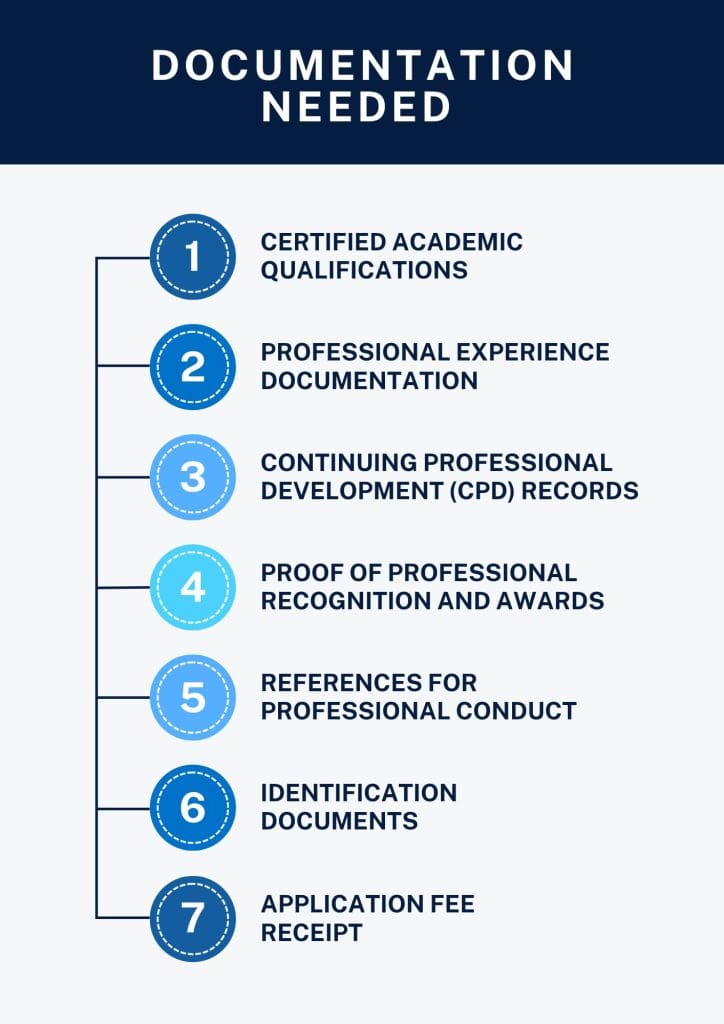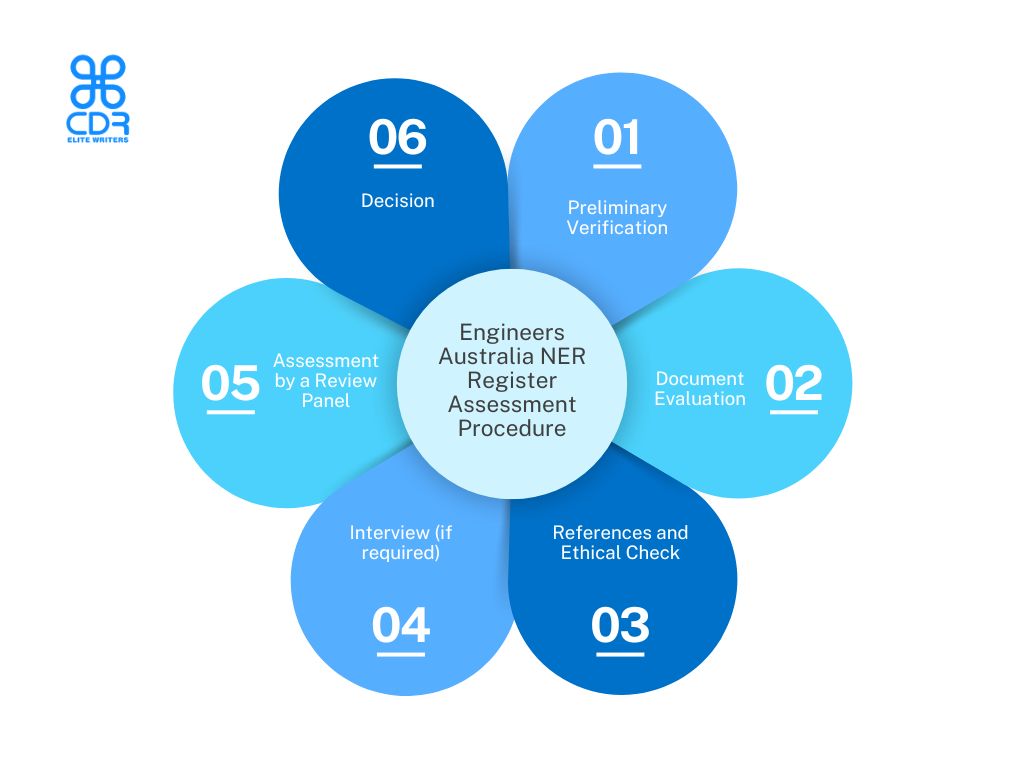Introduction to the National Engineering Register (NER)
The National Engineering Register (NER) is a searchable database of engineers certified by Engineers Australia. It showcases those who meet strict criteria, promoting excellence in the profession. The NER includes engineers from various fields. They must have the right education, show commitment to development, and adhere to ethical standards.
Being on the Engineers Australia NER Register shows an engineer’s professionalism, expertise, and reliability. For clients, stakeholders, and employers, the NER is vital in finding top engineering professionals. These professionals have proven their commitment to excellence and strict regulatory standards. Thus, joining the NER is more than gaining recognition. It’s about meeting the engineering community’s high standards of excellence and integrity.

Benefits of NER Registration
Being on the National Engineering Register (NER) has many benefits. They are vital for any engineer.
- Firstly, being on the National Engineering Register boosts an engineer’s status. It marks them as meeting high standards in skill and ethics. This recognition builds trust with clients, stakeholders, and employers. It also opens doors to new career opportunities.
- Secondly, the NER boosts confidence in an engineer’s skills. For those on the register, it shows a commitment to ongoing learning and staying updated in their field. This is vital in an industry where technology and best practices constantly change.
- Being part of the NER offers networking with top engineers. It also allows for sharing knowledge, exchanging ideas, and collaborating on projects. This boosts personal growth and advances the engineering field.
In summary, the NER’s status is vital for engineers. It helps them build a reputation for excellence and reliability in their work.
Eligibility Criteria of NER Registration
To be eligible to apply for an NER credential, you need to meet the following criteria:
- have an Engineers Australia recognized engineering qualification or a successful Engineers Australia migration skills assessment or membership competency assessment.
- have five or more years of relevant full-time equivalent engineering work experience in the last 10 years, with at least four years of full-time equivalent post graduate experience .
- meet all five NER competencies (PDF).
Note: You don’t need to be a member of Engineers Australia to apply for an NER credential.
How to apply for NER Registration
Applying for an NER credential is a five-step process.
- Create an account in the member portal.
- Login and complete the online self-assessment form to rate yourself against the NER competencies and apply for NER.
- Obtain two relevant referees who can verify your recent work experience.
- Have an NER interview with a qualified Engineers Australia assessor.
- Receive your outcome notification. If successful, you’ll be automatically added to the NER.
If you’re a member of Engineers Australia you can also join the NER when you apply for a Chartered credential.
Required documents for NER Registration
Members
If you’re an Engineers Australia member you’ll need the following documents scanned and ready to upload:
- An expanded CV detailing the projects you’ve been responsible for and your key achievements. This should include situations, problems and opportunities you’ve faced. The specialist skills or knowledge you used and the outcomes achieved. Also include any actions you took to address problems. Highlight where you’ve shown innovation and creativity.
Non-members
If you’re not an Engineers Australia member, you can still apply for an NER credential. You’ll need the following documents scanned and ready to upload:
- An expanded CV detailing the projects you’ve been responsible for and your key achievements. This should include situations, problems and opportunities you’ve faced. The specialist skills or knowledge you used and the outcomes achieved. Also include any actions you took to address problems. Highlight where you’ve shown innovation and creativity.
- Colour-scanned copy of your photo identification. A passport or driver licence is fine.
- Proof of your recognised qualifications such as a testamur or transcripts from an Engineers Australia accredited qualification. Alternatively you can use an Engineers Australia membership competency or migration skills assessment outcome letter.
Completing the Application Form for the National Engineering Register
The application form for the National Engineering Register (NER) is a critical component of the registration process, as it provides essential information about your qualifications, experience, and professional conduct. Here’s a guide to help you navigate the completion of the application form effectively.
1. Personal Information
- Full Name: Provide your legal name as it appears on official documents.
- Contact Details: Include your current address, email, and phone number.
- Date of Birth: This helps verify your identity.
2. Qualifications
- Educational Background: List all relevant degrees and qualifications. Include the institution name, degree obtained, and dates of attendance.
- Accreditation Status: Specify whether your qualifications are recognized by the relevant accrediting body.
3. Professional Experience
- Employment History: Detail your work experience in chronological order, starting with your most recent position. Include:
- Job title
- Employer name and location
- Duration of employment
- Key responsibilities and projects
- Project Descriptions: Highlight significant projects you have worked on, emphasizing your role and contributions.
4. Continuing Professional Development (CPD)
- CPD Activities: List any professional development courses, workshops, seminars, or conferences attended since your last qualification. Include:
- Title of the course or event
- Provider or organization
- Date of completion
- Hours of CPD: Indicate the total number of hours spent on CPD activities.
5. Professional References
- Referees: Provide the names and contact details of two referees who can verify your recent work experience. They’ll need to be:
- Preferably Chartered members of Engineers Australia, registered on the NER or engineers with more than five years of post-graduate engineering experience.
- Someone who has had a recent professional relationship with you.
- Someone who knows your work and the experience you’re using to support your self-assessment.
- In the same area of engineering practice that you’re seeking registration.
An assessor will contact each of your referees to discuss you and your experience.
6. Declaration and Signature
- Professional Conduct Declaration: You may be required to declare adherence to the code of conduct and ethical standards of the engineering profession. Read this section carefully and ensure you can comply.
- Signature and Date: Sign and date the application form to confirm that all information provided is accurate and complete.
7. Attachments
- Supporting Documents: Indicate any documents you are attaching, such as:
- Copies of qualifications
- Evidence of CPD
- Professional references
Once submitted, your application will undergo a thorough review process. The NER may contact you for additional information or clarification during this time. Patience and cooperation with any requests from the NER will facilitate a smoother assessment process.

Documentation Needed to Support Your NER Application
The provision of comprehensive documentation is paramount in substantiating your credentials for inclusion on the National Engineering Register (NER). The under listed items delineate the essential documents required to support your application:
- Certified Academic Qualifications: Furnish certified copies of all relevant engineering degree certificates and academic transcripts. Certification must be carried out by a notary public or another authorized officiant to ensure the authenticity of your academic achievements.
- Professional Experience Documentation: Supply detailed reports or letters of recommendation from current or previous employers. These documents should verify your professional engineering experience, outlining roles, responsibilities, and the duration of each employment period.
- Continuing Professional Development (CPD) Records: Present logs or certificates of completed CPD activities. Documentation should include the title of the activity, date of completion, and a brief description of how the activity contributes to your professional development in engineering.
- Proof of Professional Recognition and Awards: If applicable, include certificates or letters acknowledging any professional awards or recognitions received in your field. These documents serve to underscore your excellence and contributions to the engineering community.
- References for Professional Conduct: Provide letters of reference from professional colleagues or leaders within the engineering community attesting to your ethical standards and professional conduct. These references should speak to your character, integrity, and professionalism in the workplace.
- Identification Documents: Attach copies of government-issued identification to confirm your identity. This may include a driver’s license, passport, or national identity card.
- Application Fee Receipt: If an application fee is required, include a copy of the receipt or proof of payment to ensure your application is processed without delay.
It is imperative that all documents are presented in a clear, legible format and, where necessary, translated into English by a certified translator. Accurate and comprehensive documentation significantly streamlines the review process, thereby accelerating your path to NER inclusion. Applicants are advised to keep copies of all submitted documents for their records.

Engineers Australia NER Register Assessment Procedure
Upon submission, each application is subjected to a stringent assessment procedure designed to scrutinize the credentials of the applicant thoroughly. This procedure is divided into several key stages:
- Preliminary Verification: Initially, the accreditation body conducts a preliminary review to confirm that all required documentation has been submitted and is in order. This step ensures that the application is complete and adheres to the stipulated requirements, facilitating a smooth evaluation process.
- Document Evaluation: Following the initial verification, a detailed evaluation of the submitted documents takes place. Here, the focus is on verifying the authenticity of educational qualifications, professional experience, CPD activities, and any additional certifications or awards. This thorough document review is essential for assessing the applicant’s eligibility against the established criteria.
- Professional References and Ethical Standards Check: Part of the assessment process involves reaching out to the professional references provided by the applicant. This step is crucial for verifying the applicant’s professional conduct and ethical standards. Additionally, any claims of professional recognition and contributions to the field are validated during this phase.
- Interview (if required): In certain cases, the accrediting body may request an interview with the applicant. This stage allows the applicant to discuss their application in more detail. They can clarify any ambiguities and show their commitment to excellence and ethics.
- Assessment by a Review Panel: The final stage of the assessment procedure involves a comprehensive review by a panel of experts. The panel will debate the applicant’s qualifications, experience, and ethics.
- Decision: The review panel decides on the applicant’s eligibility for the National Engineering Register. It then informs successful applicants and welcomes them. Those who don’t qualify receive feedback on improvements.
It is incumbent upon the applicant to provide accurate and comprehensive information throughout the application process. Misrepresentation or omission of pertinent details may lead to rejection of the application or revocation of NER registration.
Maintaining Your NER Registration
To keep one’s registration on the National Engineering Register (NER), one must meet annual requirements. They ensure continued professional development and ethics. Once registered, engineers must:
- Undertake continuing professional development (CPD)
- Renew their registration annually
- Adhere to the Engineers Australia Code of Ethics
Failure to meet these annual requirements may result in the suspension or revocation of registration.
Fees for National Engineering Register
Registration on the NER operates on an annual subscription basis with different fees for members and non-members.
The assessment fee includes registration on the NER for the remainder of the current membership or financial year.
All prices include GST.
| Member | Non-member | |
|---|---|---|
| Assessment | $380 | $630 |
| Annual fee | $120 | $195 |
Conclusion and Next Steps
In summary, the National Engineering Register (NER) is a top mark of achievement in engineering. It showcases an engineer’s commitment to growth, ethics, and skill. Benefits, examples, and requirements show that NER registration is more than a certificate. It’s a career booster, opening up more opportunities, building client trust, and marking a commitment to high standards in engineering.
The value of NER registration in enhancing the trajectory of an engineering career is undeniable. Getting this prestigious registration shows an engineer’s dedication to their growth. It also benefits the broader engineering community and society.



